Know more about Cheongsam slits
eastqipao2025-10-12T19:51:50+08:00Know more about Cheongsam slits
Let’s discuss the crucial role the slit plays in the overall design of the cheongsam.
Don’t underestimate this small detail. Even this tiny slit can reveal a myriad of feminine expressions. A smaller slit reduces the gait, automatically slowing the steps and making them graceful. A larger slit enhances the sense of fluidity, allowing the glimpse of legs to enhance the rhythm of the cheongsam, making it even more graceful and elegant.
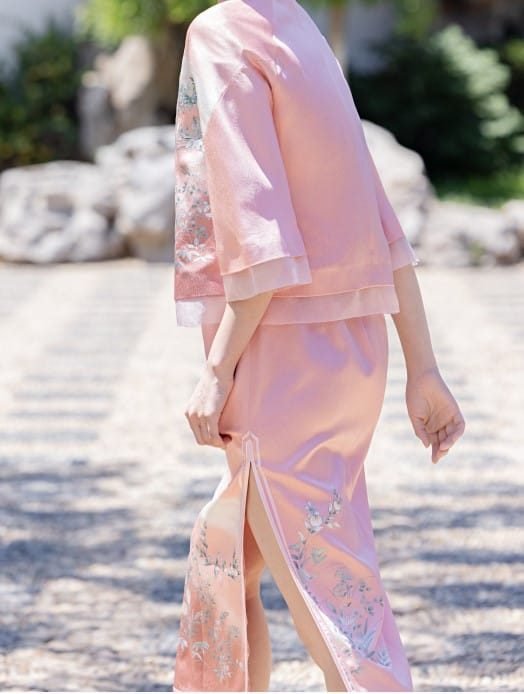
The slits of the cheongsam are like opening the door to the sensuality of Chinese clothing. However, this sensuality isn’t overtly explicit. Instead, it draws inspiration from and features Chinese feminine culture, drawing on the generally reserved temperament of Eastern women. Through this small opening, the slits slowly unleash the rhythm and flow of feminine beauty.
Next, let’s discuss the common types of slits found in Qipaos, along with their respective advantages and characteristics.
How to choose the right slit for a cheongsam?
Before that, let’s first discuss slits. In the early Republican era, Cheongsams featured slits extending all the way to the waist, often worn with thin underwear. This was a characteristic of the time, but through continuous refinement, these slits were replaced by simpler, lighter, and more elegant designs.
The slit of a cheongsam reflects both a woman’s aesthetic and everyday function, as well as cultural characteristics and aesthetic considerations.
In modern Cheongsam design, the height and placement of the slit are crucial. Where should the slit be positioned to enhance the Qipao’s beauty? What is the appropriate length and size of the slit? Does it enhance a woman’s figure and gait?
So how do you choose the right slit for your cheongsam? Let’s first teach you two simple measurement methods:
The first method involves standing upright with your arms hanging naturally. Find the tip of your middle finger. This is the optimal slit height for your cheongsam, ideally no more than 5 cm above or below.
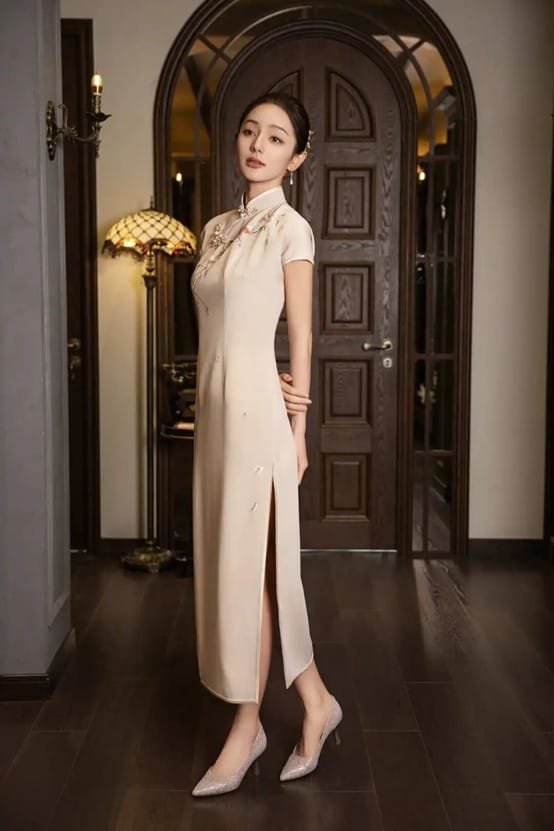
The second method is simpler and more convenient. Using the knee pit as a reference point, 12 cm above is the optimal slit height. With this in mind, let’s discuss the characteristics of each cheongsam slit in detail.
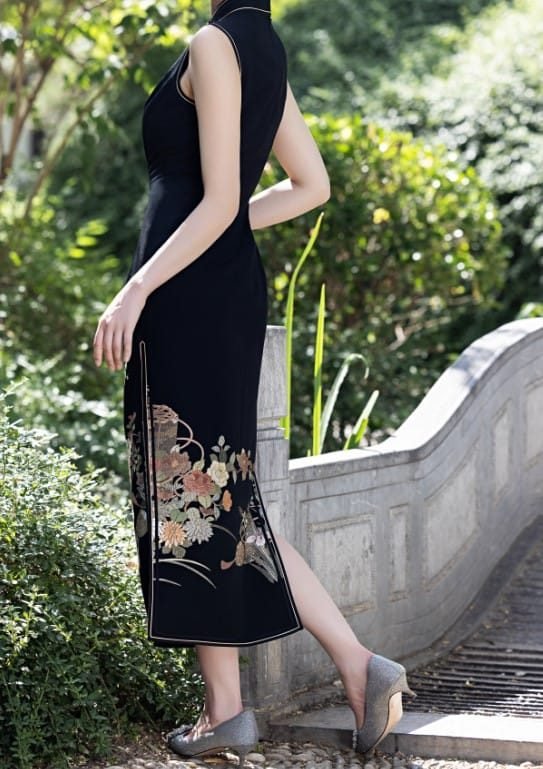
Front Slit Design
Front slits have become a popular design in recent years, often seen in modified cheongsams and new Chinese styles.
Compared to traditional slits, this type of slit offers a bolder, more direct aesthetic. It’s also more comfortable for everyday wear and suitable for women of all ages.
Because the slit is positioned at the front, it allows for a subtle glimpse of the leg while walking, adding a touch of allure. Furthermore, the front slit not only provides breathability and lightness within the overall silhouette but also elongates the leg, creating a taller and slimmer look.
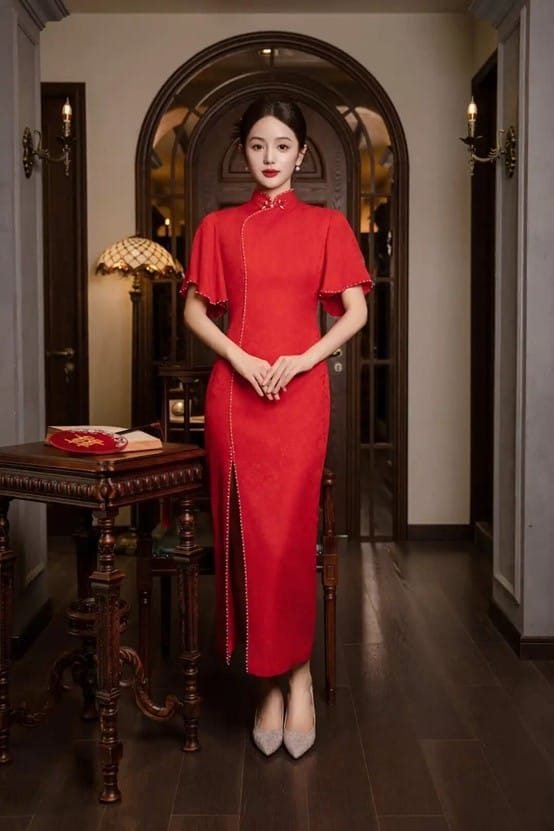
Side Slit Design
A side-slit cheongsam features a very traditional, retro slit design. It’s both classic and timeless, and is often used in various cheongsam styles. This single-sided slit evokes a graceful, retro, “Old Shanghai” vibe.
Side slits are generally categorized into single and double side slits. Single-sided slit cheongsams are further divided into three types: high, medium, and low.
High-slit cheongsams: A common style of modified cheongsams, the slit is usually about 15 cm below the hip line, near the mid-thigh. The height of the slit can easily expose the body, so be careful when walking or sitting.
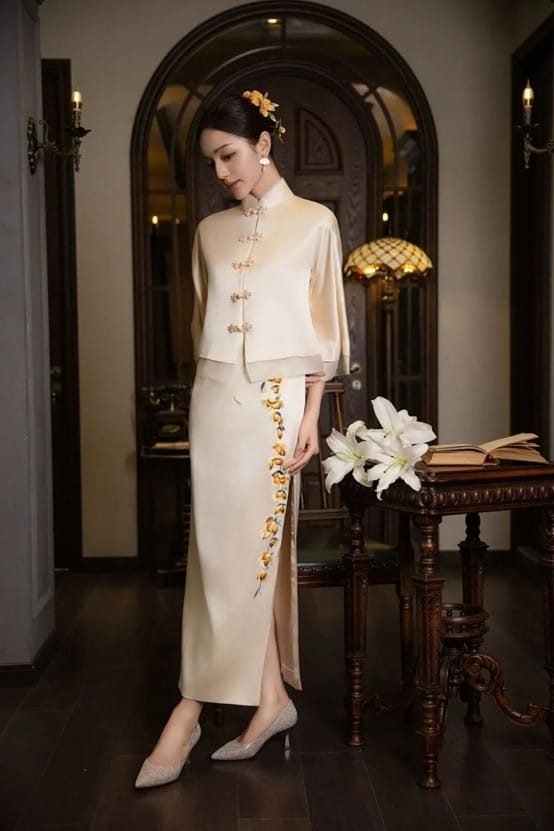
Middle-slit Cheongsams: As a common style of ancient Qipao, its slit height is generally about 25cm below the hip line, which is near the knee. The hem is slightly gathered, and it is straight and loose, making it more convenient for daily walking.
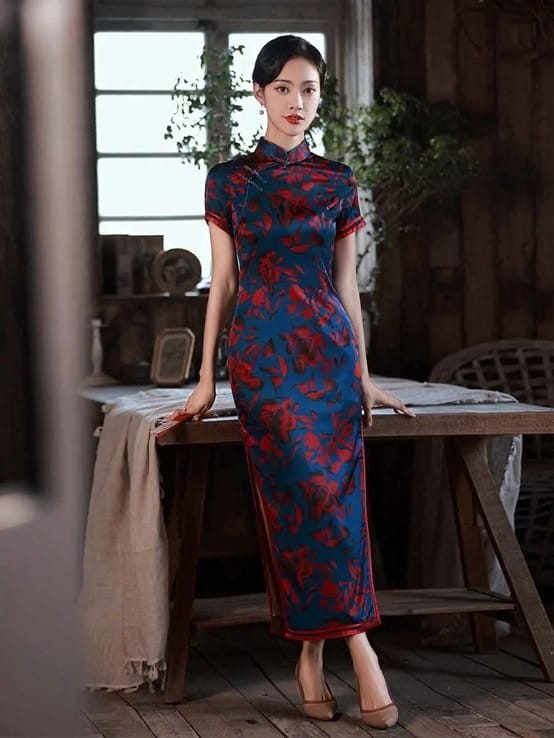
Low-slit Cheongsams: A modified version of the Cheongsam, the slit is typically about 40cm below the hip line, near the calf. This height is ideal for those who prefer a loose, retro cheongsam, as the lower the slit, the wider the hem, giving it the casual charm of a traditional Cheongsam.
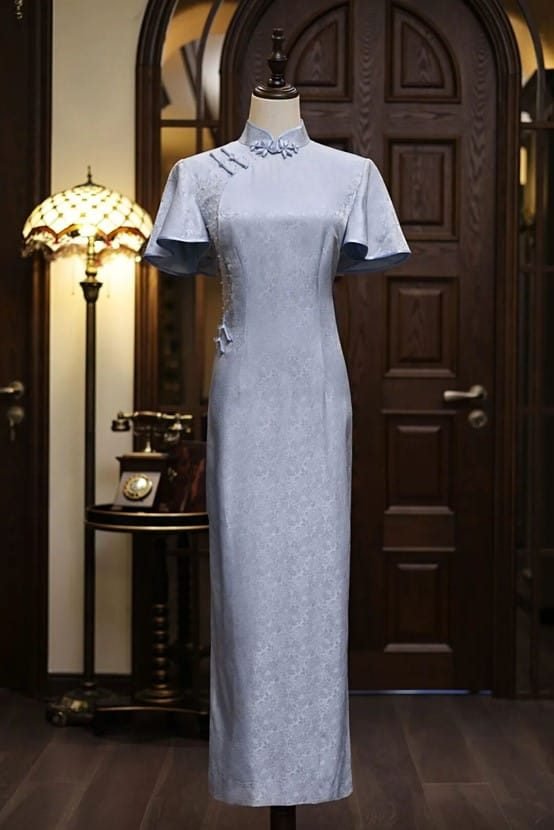
Back Slit Design
Some people often say that cheongsams with back slits are more suitable for more conservative women. Of course, this slit design not only makes walking easier but also conceals minor leg imperfections.
However, few people mention that a cheongsam with a back slit can highlight the curves of the waist and hips while walking, while the subtle glimpse of leg skin creates a subtle and captivating aesthetic.
Thus, it can be said that different cheongsam designs each possess a unique world, showcasing different kinds of beauty.
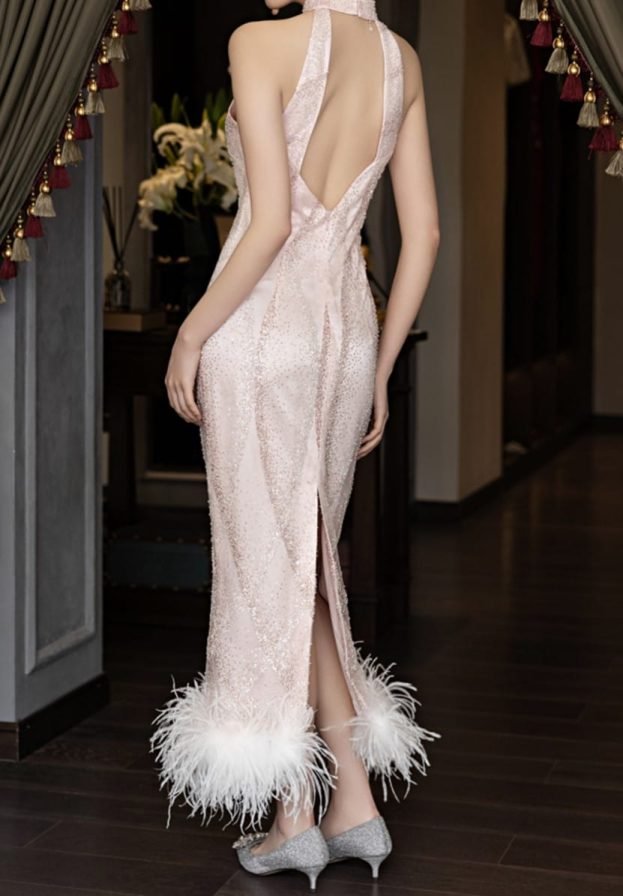
Slit-Free Design
The slit-free cheongsam is a more traditional Qipao skirt design. This slightly restrictive hemline, in earlier times, evoked a sense of small strides, slow movement, and subtle, delicate beauty. However, over the course of its evolution, it has become less suited to the pace of modern life and aesthetic demands. Therefore, today’s slit-free cheongsams often feature a slender A-line design. This refined design combines the solemn elegance of Western-style skirts with the simplicity and elegance of an everyday skirt.
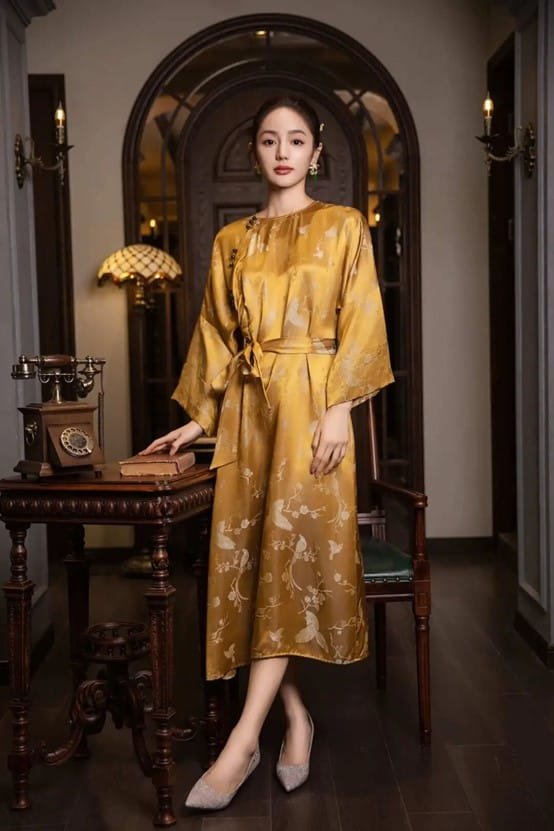
The slits of the cheongsam are closely related to women’s own beauty and style. No matter whether you are elegant and graceful or unrestrained and bold, these different characteristics are the key to our choice of a Qipao and the premise for our choice of different slits.
For More Cheongsam options, welcome you to visit our shop: Shop – eastqipao.com
